Text
The Rise of Monofilament Fabric Manufacturers in India
The textile industry in India has always been a cornerstone of the country's economy, with its rich heritage and vast capabilities. Among the various segments within this industry, monofilament fabric manufacturing has recently seen a significant rise. Monofilament fabrics, known for their durability and versatility, are increasingly in demand, and India is quickly becoming a hub for their production. Let’s delve into the factors contributing to the rise of monofilament fabric manufacturers in India.

Understanding Monofilament Fabric
Monofilament fabric is made from a single continuous filament, which makes it incredibly strong and uniform. This type of fabric is used in various applications, including filtration, screen printing, and even in medical fields. The strength and reliability of monofilament fabric make it a preferred choice in industries where precision and durability are paramount.
Why India?
India's rise as a key player in the monofilament fabric manufacturing sector is due to several factors:
Abundant Raw Materials: India has an ample supply of the raw materials needed to produce monofilament fabrics, including various types of polymers. This availability helps keep production costs competitive.
Skilled Workforce: The country boasts a skilled and knowledgeable workforce, with expertise in textile manufacturing that has been passed down through generations. This expertise is crucial for producing high-quality monofilament fabrics.
Technological Advancements: Indian manufacturers are increasingly adopting advanced technologies and modern machinery to enhance the quality and efficiency of monofilament fabric production. These advancements enable Indian manufacturers to meet international standards and cater to global markets.
Applications Driving Demand
The diverse applications of monofilament fabric are a significant driver of its demand:
Industrial Filtration: Monofilament fabrics are used extensively in filtration processes across various industries, including water treatment, chemical processing, and food and beverage production.
Screen Printing: The fabric's precise and uniform structure makes it ideal for screen printing, providing high-quality prints for textiles, electronics, and other products.
Medical Uses: Monofilament fabrics are also used in the medical field for wound care, surgical meshes, and other applications where sterility and strength are crucial.
Future Prospects
The future looks promising for monofilament fabric manufacturers in India. With increasing investments in technology and a continued focus on quality, Indian manufacturers are well-positioned to expand their market share globally. As industries worldwide seek reliable and cost-effective solutions, India’s monofilament fabric sector is poised for growth.
In conclusion, the rise of monofilament fabric manufacturers in India is a testament to the country’s growing capabilities in the textile industry. With a perfect blend of raw material availability, skilled workforce, and technological advancements, India is set to become a leading player in this niche market.
#monofilament fabric#monofilament fabric manufacturers#monofilament fabric supplier#monofilament fabric manufacturers in India#monofilament fabric supplier in India
0 notes
Text
Unveiling the Essence of Filter Fabric Suppliers in India: A Closer Look
Navigating the World of Filter Fabric Suppliers
In the intricate realm of industrial filtration, the quality of filter fabric plays a pivotal role in ensuring efficiency and effectiveness. As industries across India seek reliable solutions, the quest for a trustworthy filter fabric supplier becomes paramount. Let's delve into the dynamics of this crucial sector.
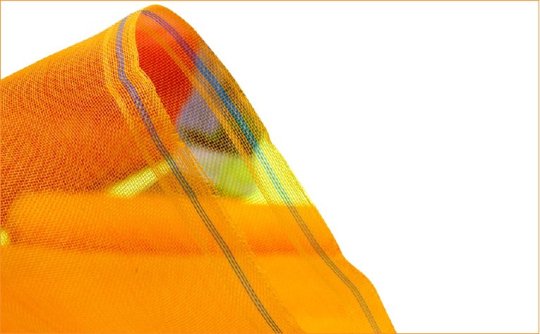
Understanding the Significance of Filter Fabric
Filter fabrics are the unsung heroes of various industries, from wastewater treatment plants to pharmaceuticals. These textiles act as barriers, separating solids from liquids or gases, ensuring purity and quality. Their diverse applications underscore the importance of sourcing from reputable suppliers.
The Role of Filter Fabric Suppliers in India
Filter fabric suppliers in India serve as the backbone of numerous sectors, catering to a wide array of needs. They offer a spectrum of fabrics tailored to specific requirements, be it durability, pore size, or chemical resistance. Their expertise lies in providing solutions that align with industry standards and regulations.
Quality Assurance: A Cornerstone of Trust
Reliable suppliers prioritize quality assurance at every step of the manufacturing process. From selecting raw materials to final product inspection, stringent quality control measures ensure consistency and reliability. This commitment to excellence fosters trust among clientele, solidifying long-term partnerships.
Innovations Driving Industry Advancements
The landscape of filtration is ever-evolving, propelled by technological advancements and innovative solutions. Filter fabric suppliers in India actively engage in research and development to stay ahead of the curve. This continuous pursuit of innovation results in cutting-edge fabrics that meet the evolving needs of modern industries.
Environmental Sustainability: A Growing Imperative
With sustainability taking center stage, filter fabric suppliers in India are embracing eco-friendly practices. From utilizing recycled materials to implementing energy-efficient manufacturing processes, sustainability is woven into their operations. By prioritizing environmental responsibility, these suppliers contribute to a greener future.
Navigating Towards Reliable Partnerships
In the quest for filter fabric suppliers in India, reliability, quality, and innovation are the pillars of distinction. As industries continue to demand superior filtration solutions, forging partnerships with reputable suppliers becomes indispensable. By understanding the essence of filter fabric suppliers, businesses can navigate this intricate landscape with confidence, ensuring efficiency, sustainability, and success.
#filter fabric manufacturers#filter fabric supplier#filter fabric supplier in India#filter fabric manufacturers in India
0 notes
Text
Unveiling the Power of Filter Fabric: Enhancing Filtration Efficiency Across Industries
Filter fabric, also known as filter media, plays a crucial role in various industrial processes and applications, offering efficient filtration solutions for a wide range of substances. From removing contaminants in water treatment plants to separating particles in air filtration systems, filter fabric is indispensable across numerous industries. Let's explore the significance of filter fabric and its diverse applications.
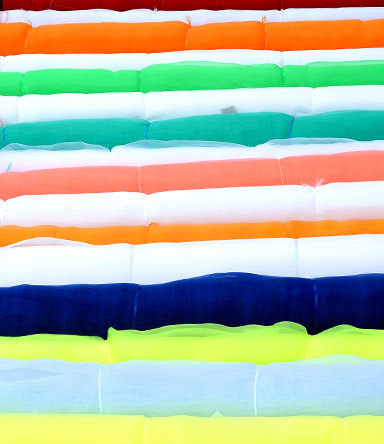
Understanding Filter Fabric
Filter fabric is a porous material designed to capture and separate particles from fluids or gases passing through it. It consists of a network of fibers or membranes arranged in a specific configuration to achieve desired filtration properties. Filter fabric can vary in composition, pore size, thickness, and filtration efficiency, depending on the application requirements.
Applications in Water Treatment
One of the primary applications of filter fabric is in water treatment processes. Filter fabric is used in filtration systems to remove suspended solids, sediments, and contaminants from water sources, ensuring that the water meets regulatory standards for drinking water, industrial use, or environmental discharge. Filter fabric is employed in various filtration stages, including sedimentation, clarification, and final polishing, to achieve clean and clear water.
Industrial Filtration Systems
In industrial settings, filter fabric is utilized in a wide range of filtration systems to separate solids from liquids or gases. Industries such as pharmaceuticals, chemicals, food and beverage, and automotive rely on filter fabric for processes such as product purification, wastewater treatment, air pollution control, and oil and gas filtration. Filter fabric enhances operational efficiency, product quality, and regulatory compliance in these industries.
Air Filtration and HVAC Systems
Filter fabric also plays a critical role in air filtration and HVAC (Heating, Ventilation, and Air Conditioning) systems, where it captures airborne particles, allergens, and contaminants to improve indoor air quality. Filter fabric is used in air filters, filter bags, and filter media to trap dust, pollen, mold spores, and other pollutants, creating a healthier and more comfortable indoor environment for occupants.
Geotextiles and Environmental Applications
Beyond industrial and HVAC applications, filter fabric finds use in geotextiles for soil stabilization, erosion control, and drainage applications. Geotextile filter fabric prevents soil erosion, facilitates drainage, and provides support for infrastructure projects such as roads, embankments, and retaining walls. Additionally, filter fabric is employed in environmental protection projects, such as landfills, remediation sites, and stormwater management systems, to contain and treat pollutants.
Filter fabric is a versatile and indispensable material that enhances filtration efficiency across various industries and applications. Whether in water treatment plants, industrial processes, air filtration systems, geotextiles, or environmental projects, filter fabric plays a critical role in ensuring clean water, air, and soil. With its diverse capabilities and applications, filter fabric continues to be a vital component in achieving cleaner and healthier environments worldwide.
0 notes
Text
Innovative Solutions: Exploring HDPE Filter Fabric Manufacturing in India
HDPE Filter Fabric: Revolutionizing Filtration Technology
HDPE (High-Density Polyethylene) filter fabric stands at the forefront of filtration technology, offering unparalleled efficiency and durability in removing impurities from liquids and gases. As a leading manufacturer in India, the production of HDPE filter fabric has become synonymous with innovation and quality. Let's delve into the world of HDPE filter fabric manufacturing in India and uncover its transformative impact on filtration solutions.
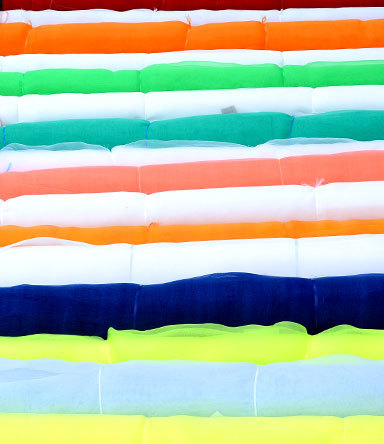
Precision Engineering: Crafting High-Quality Filter Fabric
HDPE filter fabric manufacturing in India involves precision engineering and advanced manufacturing techniques to produce high-quality filtration materials. From selecting the finest raw materials to employing state-of-the-art machinery, manufacturers ensure that every step of the production process adheres to strict quality standards. The result is a range of HDPE filter fabrics that offer superior filtration performance, durability, and longevity.
Cutting-Edge Technology: Harnessing Innovation for Efficiency
In India, manufacturers of HDPE filter fabric leverage cutting-edge technology to enhance production efficiency and product quality. Advanced weaving machines, coating equipment, and quality control systems are employed to optimize the manufacturing process and ensure consistency in product performance. This commitment to innovation allows Indian manufacturers to stay ahead of the curve and meet the evolving needs of customers in diverse industries.
Customized Solutions: Meeting Diverse Filtration Needs
One of the key strengths of HDPE filter fabric manufacturers in India lies in their ability to offer customized solutions tailored to the specific filtration needs of customers. Whether it's for wastewater treatment, chemical processing, food and beverage production, or environmental remediation, manufacturers can produce HDPE filter fabrics with varying pore sizes, thicknesses, and specifications to meet the unique requirements of each application.
Quality Assurance: Upholding Standards of Excellence
Quality assurance is paramount in HDPE filter fabric manufacturing in India, with manufacturers adhering to stringent quality control measures throughout the production process. From raw material inspection to final product testing, every batch of HDPE filter fabric undergoes rigorous quality checks to ensure compliance with industry standards and specifications. This commitment to excellence ensures that customers receive reliable and high-performance filtration solutions they can trust.
Conclusion: Driving Innovation in Filtration Technology
In conclusion, HDPE filter fabric manufacturers in India are driving innovation and setting new benchmarks in filtration technology. With precision engineering, cutting-edge technology, customized solutions, and stringent quality assurance practices, these manufacturers are revolutionizing the way impurities are removed from liquids and gases across industries. As the demand for efficient and sustainable filtration solutions continues to grow, HDPE filter fabric manufacturers in India are poised to lead the way, delivering superior products and driving positive change in the world of filtration.
#HDPE Filter fabric in India#HDPE Filter fabric Supplier in India#HDPE Filter fabric manufacturer In India#HDPE Filter fabric Supplier#HDPE Filter fabric manufacturer
0 notes
Text
Casting Brilliance: The Art and Craft of Monofilament Fabric Fishing Net Suppliers
The Unseen Heroes of Fishing Excellence
Behind every successful fishing expedition lies the expertise of Monofilament Fabric Fishing Net Suppliers, the unsung heroes weaving brilliance into the unseen tools of the trade. In this exploration, we unravel the art and craft of these suppliers, masters in the creation of monofilament fishing nets that redefine excellence on the waters.
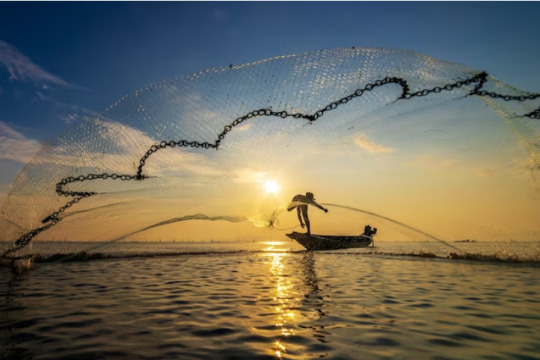
Monofilament Mastery: Crafting Nets with Finesse
At the core of the artistry lies the mastery of monofilament—a single, ultra-fine strand of material that revolutionizes fishing net design. Monofilament fabric fishing net suppliers are adept at harnessing the finesse of this material, creating nets that are not just tools but precision instruments designed to enhance catch efficiency.
Innovative Design Techniques: Engineering Efficiency into Every Net
Monofilament fabric fishing nets stand out for their innovative design techniques. Suppliers employ engineering principles to optimize mesh size, spacing, and strength, ensuring that each net is crafted for maximum efficiency. These design innovations contribute to a lightweight yet robust structure that aids fishermen in navigating the waters with ease.
Strength in Simplicity: The Power of Single Strand Construction
The beauty of monofilament fabric lies in its simplicity—a single, untangled strand creating a seamless mesh. Fishing net suppliers leverage this simplicity to enhance strength and durability. The single-strand construction not only resists abrasion but also provides a clear advantage in terms of ease of handling, casting, and maintenance.
Customization for Varied Needs: Tailoring Nets for Every Catch
Monofilament fabric fishing net suppliers understand that each fishing expedition is unique. They excel in customization, tailoring nets to meet specific needs. Whether it's gill nets for precise catches or trawl nets for larger hauls, suppliers ensure that their monofilament nets are adapted to the diverse requirements of fishermen.
Environmental Considerations: Sustainable Nets for Sustainable Seas
Many monofilament fabric fishing net suppliers prioritize environmental considerations. They engage in sustainable sourcing of materials, advocating for responsible fishing practices. The use of monofilament material, known for its low environmental impact, aligns with a commitment to preserving marine ecosystems and ensuring sustainable fishing for generations to come.
Monofilament Marvels - Weaving Success on the Waters
As we delve into the art and craft of monofilament fabric fishing net suppliers, it becomes evident that these individuals are not just suppliers; they are architects of success on the waters. With monofilament mastery, innovative design, customization, and environmental consciousness, they craft nets that go beyond utility—they are tools of precision and sustainability, weaving brilliance into every cast.
#monofilament fabric fishing net supplier#monofilament fabric#monofilament fabric manufacturers#monofilament fabric supplier#fishing net fabric supplier in India
0 notes
Text
Unveiling the Tapestry: The Pioneers Behind HDPE Filter Fabric Manufacturing
The HDPE Advantage: Crafting Excellence in Filtration Materials
High-Density Polyethylene (HDPE) filter fabric has become synonymous with superior filtration performance. As industries worldwide increasingly demand efficient filtration solutions, the spotlight is on the manufacturers who weave the threads of excellence into every inch of HDPE filter fabric. Let's explore the fascinating world of these innovators and the key role they play in shaping the landscape of modern filtration.
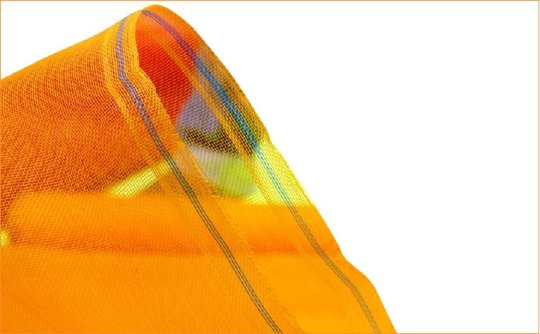
Innovation at the Core: The Art and Science of HDPE Filtration
At the heart of HDPE filter fabric manufacturing is a delicate balance between art and science. Craftsmen and engineers collaborate to masterfully extrude and weave HDPE into a fabric that not only withstands the rigors of industrial applications but also enhances filtration efficiency. The process involves precision and expertise, ensuring that each strand contributes to a fabric that stands tall in the face of diverse filtration challenges.
Engineering Durability: The Building Blocks of HDPE Filter Fabric
HDPE, known for its robustness and resistance, serves as the primary building block for filter fabric. The polymer's ability to withstand harsh chemicals, high temperatures, and corrosion makes it an ideal choice for demanding filtration environments. Manufacturers meticulously select and process HDPE to create a fabric that not only meets industry standards but often surpasses them.
Sustainable Filtration: HDPE's Eco-Friendly Footprint
In an era where sustainability is non-negotiable, HDPE filter fabric manufacturers are championing eco-friendly practices. HDPE, a recyclable material, aligns with the global push for sustainable solutions. Manufacturers are increasingly adopting greener processes, emphasizing not only the efficiency of their products but also their commitment to environmental responsibility.
Meeting Industry Needs: Tailoring HDPE Filter Fabric for Diverse Applications
Versatility is a hallmark of HDPE filter fabric. Its adaptability to various industrial settings, including wastewater treatment, chemical processing, and more, showcases its prowess in meeting diverse filtration needs. Manufacturers understand the importance of tailoring their products to address specific industry challenges, making HDPE filter fabric a reliable choice across sectors.
Weaving the Future of Filtration Excellence
As we navigate the intricate world of HDPE filter fabric manufacturing, it becomes evident that these innovators are the unsung heroes behind the scenes. Their commitment to excellence, technological prowess, and environmental consciousness collectively shape the landscape of filtration. In every thread and weave, HDPE filter fabric manufacturers contribute to a future where filtration is not just efficient but also sustainable, solidifying their role as pioneers in the realm of filtration materials.
#filter fabric manufacturers#filter fabric supplier#fabric net for filtration#filter fabric manufacturers in India
0 notes
Text
The Silent Guardians: Mosquito Net Fabric Manufacturers Keeping You Safe
In an age where health and well-being have taken center stage, mosquito net fabric manufacturers play a vital role in protecting us from mosquito-borne diseases. Their commitment to quality and innovation has made mosquito nets more than just a necessity; they're now a stylish addition to modern living.
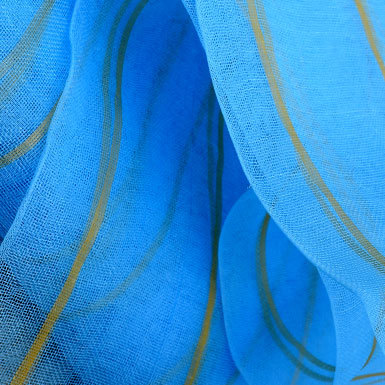
Quality Craftsmanship
Precision in Manufacturing
Mosquito net fabric manufacturers take their craft seriously. They use high-quality materials and state-of-the-art technology to create nets that not only keep mosquitoes at bay but also withstand the test of time. This precision is essential in ensuring the nets serve their purpose effectively.
Aesthetic Appeal
Design Meets Functionality
Gone are the days when mosquito nets were bulky and unattractive. Today, manufacturers prioritize the aesthetic aspect of their designs. The nets are available in various colors and patterns, blending seamlessly with modern interior decor. They have become a stylish addition to bedrooms and living spaces.
Health and Well-being
Disease Prevention
Mosquitoes are vectors for deadly diseases like malaria, dengue, and Zika virus. Mosquito net fabric manufacturers play a crucial role in disease prevention by creating nets that act as a physical barrier between mosquitoes and humans. This simple yet effective solution saves lives.
Sustainability in Focus
Environmentally Friendly Practices
Many mosquito net fabric manufacturers are now embracing sustainable and eco-friendly production practices. They use materials that are safe for the environment, reducing their carbon footprint. This commitment to sustainability aligns with the global push for a greener future.
Global Impact
Reaching Those in Need
Mosquito net fabric manufacturers have a global reach, providing nets to regions where mosquito-borne diseases are prevalent. Their efforts are not just about creating products but about making a positive impact on the health and well-being of communities worldwide.
Mosquito net fabric manufacturers are the silent guardians of our well-being. Their commitment to quality craftsmanship, design, disease prevention, sustainability, and global impact has elevated the humble mosquito net to a trendy and essential part of modern living. As we continue to prioritize health and safety, these manufacturers will remain at the forefront of keeping us safe from the tiny but deadly threats that mosquitoes pose.
#Mosquito net fabric manufacturer in India#Mosquito net fabric supplier in India#Mosquito net fabric manufacturer#mosquito curtain fabric supplier
1 note
·
View note